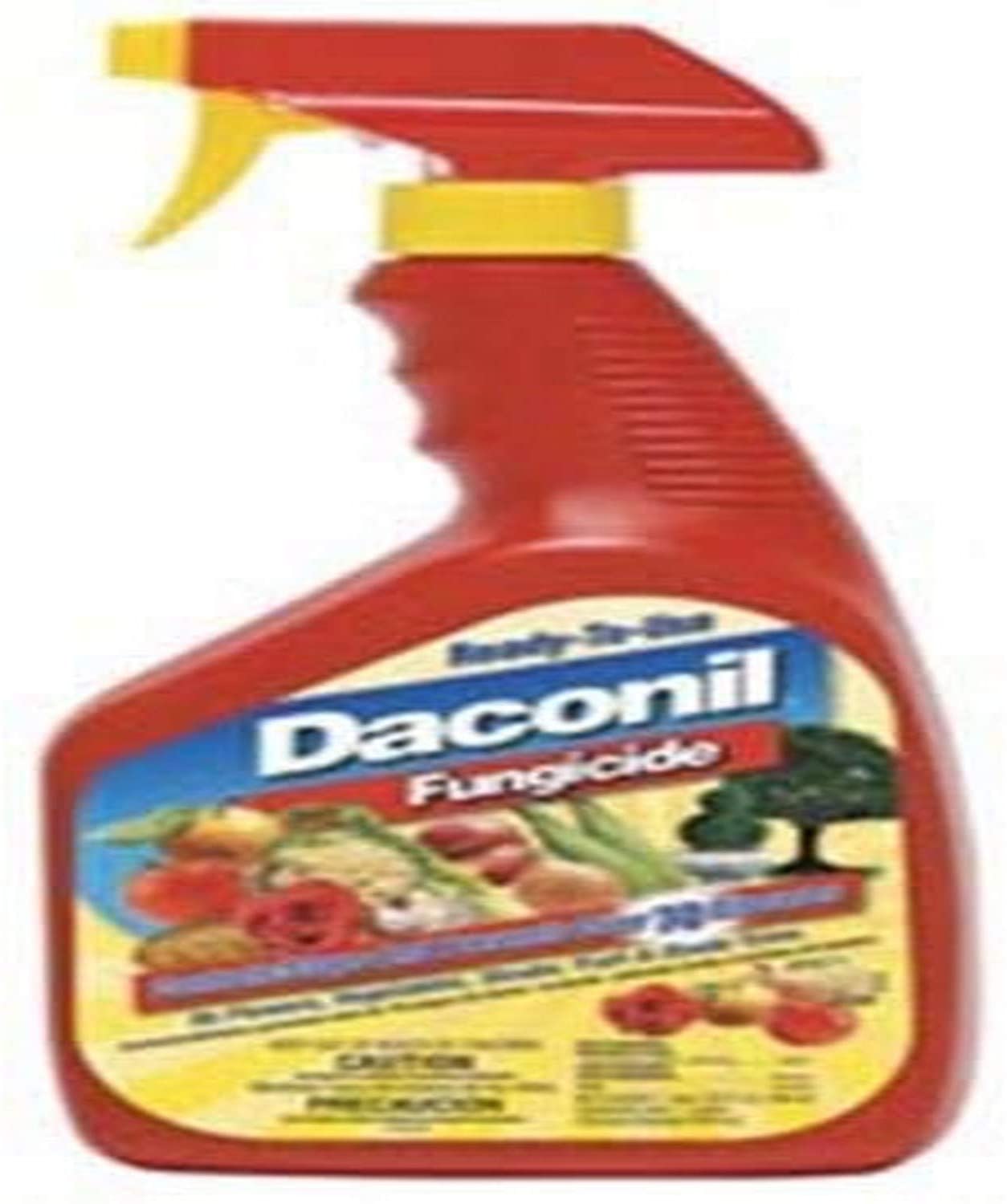How To Apply Fungicides
Fungicides, like pesticides and herbicides, typically come in liquid and granule application types. Watch the video above or read our guide on how to apply liquid and granular products to learn how to apply the fungicide of your choice.
Reapply your fungicide every 14-21 days as needed, depending on the label of the fungicide. Rotate between fungicides from different FRAC groups every 2-3 applications.
How To Fix Brown Patches In Lawn
Brown or dead spots on your lawn are not fun to deal with and can be caused by a number of factors. One cause is if the pH balance in soil becomes too high, meaning it’s alkaline rather than acidic like most grass prefers – this will lead browning from occurring as well as other problems such as negative effects when walking through certain areas because they’re contaminated with urine . To fix these issues you could add lime which helps balance out those ranges again but sometimes more drastic measures may need to be taken: replacing both topsoil/compost AND plant material entirely.
A lawn thats starting to turn brown means a deep watering is needed, but not always. It can also mean the opposite – if some types of grass are experiencing more rainfall than others and they start drying out before their counterparts in other parts of your property or yard do so effectively enough because soil quality varies from place-to-place depending on what kind it is how much naturally occurring sunlight reaches each individual blade whether fertilizers have been used at all times over many years without interruption by waypoints along this journey towards sustainability–it takes time!
Feed Your Lawn Regularly
Nutrient deficiencies can weaken grass plants, so feed at least 4 times per year with Scotts® Turf Builder® Lawn Foods. A nourished lawn is better able to fend off diseases. To make the whole feeding process simple, sign up for our personalized Scotts® Lawn Care Programyou’ll get exactly what your lawn needs, right when it’s time to apply it, delivered to your doorstep. You can also for your smartphone to customize and track your personal lawn care program.
Don’t Miss: How To Kill White Clover In Grass
Can I Apply Fungicide And Fertilizer At The Same Time
You can apply fungicide and fertilizer simultaneously if you are applying a fungicide that needs to be watered into your lawn. Granular fertilizer requires water to break it down and cause it to enter the soil. If you are using a fungicide that is also activated by water, it will benefit from this process.
Helping Prevent Resistance To Fungicides

When using fungicides for recurring lawn disease problems, you need to alternate fungicides. Lawn diseases can become resistant to fungicides with repeated use. It is not as simple as picking two different products or two different brands you will want to select at least two fungicides with different modes of action or active ingredients.
Also Check: How To Fix Dead Patches In Lawn
What Is The White Stuff On My Grass
If you’re seeing white on your lawn, then the cause is likely one of two things: powdery mildew or sick grass. If the patches of white you find on your lawn are dust-like coverings of the blades, then your grass has powdery mildew. This is a common lawn disease for varieties like Kentucky Bluegrass. via
My Turf Is Sick Spray A Fungicide And Call Me In Two Weeks
El inglés es el idioma de control de esta página. En la medida en que haya algún conflicto entre la traducción al inglés y la traducción, el inglés prevalece.
Al hacer clic en el enlace de traducción se activa un servicio de traducción gratuito para convertir la página al español. Al igual que con cualquier traducción por Internet, la conversión no es sensible al contexto y puede que no traduzca el texto en su significado original. NC State Extension no garantiza la exactitud del texto traducido. Por favor, tenga en cuenta que algunas aplicaciones y/o servicios pueden no funcionar como se espera cuando se traducen.
English is the controlling language of this page. To the extent there is any conflict between the English text and the translation, English controls.
All too often turf managers spray a fungicide when disease develops and think the product does not work when they do not observe recovery within a few days. Rapid recovery could occur when fungicides are applied immediately after disease develops and the disease is not severe. However, how long would it take for turf to recover once severe disease develops? Recovery is only partially dictated by the fungicide application. Most of the recovery process is governed by environment, fertility, and cultivation.
We plan to present a similar study for Pythium root rot at our Turfgrass Field Day on August 14, 2019, so please join us for that!
Don’t Miss: Spray To Get Rid Of Gnats
What Are Lawn Fungus And Disease
- Lawn fungus and disease are ailments to lawns caused by pathogens that take hold on grass and can range from cosmetic damage to your lawn to grass death.
- There are a large variety of different lawn diseases and fungi which can affect a lawn. Observe your lawn closely and view the symptoms to figure out what disease is present.
Should You Water Lawn After Applying Fungicide
A tidy and carefully-manicured lawn can be the striking focal point of any yard, something that contributes to the overall visual effect of your yard as well as being a space you can enjoy during the warm summer months when you want to spend as much time outside as possible.
However, a lawn doesnt take care of itself, and just like people, lawns can sometimes get sick. One type of disease that affects lawns is fungal infections, and thats what were going to discuss here. Well look at how to diagnose fungal infections, how to prevent them, how to treat them and also look at the question, should you water a lawn after applying fungicide?
Heres a video that gives a good overview of fungal infections that attack lawns.
Recommended Reading: Flying Ants Hatching In Grass
What To Do Before Installing Your Lawn
The fight against fungus on the lawn in fact starts as early as the stage of establishing a new lawn. This is done by thoroughly clearing the soil under the lawn of any plant residues that may rot and decay in the future. These might be promoting the development of fungus.
If the soil is sandy, it may be useful to fertilize it and improve its physical properties. This is done by utilizing appropriate organic and mineral fertilizers before the lawn is laid. It may also be beneficial to install an irrigation system. Doing so will eliminate the exposure of the lawn to long periods of drought.
How to get rid of the fungi on an existing lawn?
First of all, regular lawn care is necessary. After each mowing, the remaining cuttings of grass must be removed. As a result of removal, they wont form a layer of felt when drying. Existing old felt will be removed by raking, scarifying and aeration.
Scarifying is a flat, vertical notch of turf, while aeration is a deeper puncture with spikes. These treatments loosen up the soil and aerate it. Scarifying should be done at the beginning of the growing season. it can be repeated 2-3 times per season.
If you decide to spray the fungus on the lawn, scarifying it beforehand will make it easier for the best fungicide to reach the grass roots deeper. A good lawn owner always ads nitrogen-rich fertilizers.
Mow Regularly At The Right Height
Mowing too short weakens the grass plant, making it more susceptible to infection. Most grass types should be mowed using a high mowing setting. Bermudagrass grass in the south should be mowed using a lower mower setting and zoysiagrass should be mowed using a middle setting. Mow often enough so that no more than the height of the grass blade is removed at one time.
Recommended Reading: Reseeding Dead Spots In Lawn
How Often To Apply Fungicide For Prevention
We’ve had trouble with our tall fescue/bluegrass and fungus/disease in past years, and this year will be applying fungicide as a preventative measure. Wondering how often it needs to be re-applied?
Should we wait till nights remain in the 70s to begin applications? I have a bag of Lebanon Eagle ready to go… In past years, disease/fungus seemed to start in mid to late June and worsen thru July and August.
BTW, please don’t tell me that I should be growing warm-season grass…I know TTF/KBG is out of it’s preferred climate here, but I want to make the cool-season grass work if at all possible and am up for the challenge. 🙂
Any other tips from people growing fescue/bluegrass in warm zone appreciated!
I usually put down fungicides may – august every 30 days here in the Charlotte area…make sure to get 2 good ones that last for 30 day and alternate.
A Beginner’s Guide To Fungicides

When most people think of fungus outdoors, they think of mushrooms. Mushrooms are a lawn fungus, but there are many other types of fungi that can damage lawns, ruining even the most well-maintained lawn quickly.
Homeowners with prior fungal problems will know that the best way to prevent fungus from damaging your lawn is to apply a preventative fungicide treatment. Once a disease has taken hold in a lawn, getting rid of the disease and repairing the damage can be time consuming, expensive, and difficult.
Fortunately, applying preventative fungicide treatments can help keep your lawn healthy and disease-free.
If you want to keep fungal diseases from destroying your lawn, use this guide to learn about common lawn diseases, how to choose the best fungicide for your lawn, and how you can prevent disease from ruining your lawn with fungicides.
Recommended Reading: Does Lowes Rent Riding Lawn Mowers
Preventing Brown Patch: Do The Basics
Good basic lawn care practices represent the best way to prevent brown patch and other lawn diseases.
the best way to prevent brown patch or large patch in the home lawn is by following good lawn care practices, Clemson HGIC says.
Once you have an outbreak, you really cant treat symptoms, Patton says. Whats already been affected wont be cured overnight.
The best defense for your lawn, as with other pest and disease problems, is a good foundation, he said. the best way to prevent brown patch or large patch in the home lawn is by following good lawn care practices, according to Clemsons guide.
Attention to cultural practices taking proper care of your lawn with regular mowing, proper fertilizing, irrigation, air circulation and weed control help prevent brown patch.
Ok You Have A Fungus Now What
Once you identify a fungus problem in your lawn, the obvious next step is to start working to combat the issue. This is where fungicides come in.
If youre not familiar with how or when to apply fungicides or which one to use for your problem, the following video should help.
This video by DoMyOwndiscusses the best way to apply fungicides, how often youll need to apply once the disease has been discovered, and how various fungicides work in your lawn.
Recommended Reading: How Much Is Trugreen Lawn Service
Why Does My Lawn Have Brown Or Discolored Patches Of Grass
You put hours into your lawn, doing everything you were told to do to make the grass green and lush. Youve aerated, fed, watered, and mowed, and everything looked great until suddenly, it didnt. Almost overnight, there are patches of dead grass. Or maybe some spots are an unusual color, or just look off somehow. Whatever the issue, its unsightly, and it looks to be spreading.
Oftentimes, when a lawn develops problems like dead or discolored areas, the culprit is disease or lawn fungus. But before you give up and decide to just replace your lawn with artificial turf, you should know that your grass can be saved. By correctly identifying the problem, and applying the proper treatment, you can eradicate the disease and go back to enjoying a yard full of healthy grass.
The Fungus Fighter Advantage
Fungus Fighter is the complete strobilurin fungicide specifically engineered to provide protection against many of the most destructive turf diseases. Each Fungus Fighter application provides systemic preventive control for a broad spectrum of turf diseases. Treating lawns with Fungus Fighter is an excellent foundation for disease resistance management strategy. Root systemic activity allows grass plants to take up Fungus Fighter and provide protection against invading fungi from within the plant.
Don’t Miss: Toro Lawn Mowers Maintenance
Which Fungicides To Pick
Clemsons HGIC guide also provides a table of fungicide active ingredients and their effectiveness on brown patch fungus:
Some that the table lists as excellent are:
- Pyraclostrobin in Pillar G Intrinsic Fungicide.
- Fluoxastrobin in Disarm 0.25.
- Azoxystrobin, both with and without Propicanazol.
Its a good idea to go ahead and pick up two different fungicides. Alternating which ones you use can help prevent a buildup of resistance to any certain fungicide.
When To Use Fungicide On Your Lawn
Apply fungicide on your lawn when it has a fungal infection. Learn to recognize the signs of lawn fungus so you can stop it from spreading.
There are many different kinds of grass fungus so it may be difficult to identify which specific fungus it is. Here are a few telltale signs that your lawn has fungus:
- Discoloration or rough edges on grass blades
- Spots on the blades or stems
- Darker slimy patches of grass
- Growing patches of yellow, brown or white
The best option is consulting a professional if you see one of these signs. They can tell what type of fungus it is specifically so that you can find the appropriate type of fungicide.
It is also important to identify when it is in fact a fungal infection and not a bacterial infection or other grass disease. Also, think about if any physical factors may have been the cause of the problem. That is why having a professional check it out is your best bet.
Read Also: Lawn Mower Rental Lowes
How Long Does Fungicide Need To Be On Before Rain
For most crops, use a 14-day minimum. After 14 days, the fungicide may have weathered considerably and new growth will warrant a new application. Apply contact products 24 hours before a rain if possible. As the information above suggests, an application of a protectant even 8 hours before a rain may be effective.
What Causes Lawn Fungal Disease

Your lawn is naturally full of fungi and spores, some harmless and some problematic. The right, or wrong, conditions can cause a fungus to erupt into a harmful disease.
The most common causes of a lawn fungal disease are:
- Improper mowing .
- Soil compaction.
- Too much fertiliser .
- Cold and extended wet periods.
- Warm and humid conditions.
- Drought and stress.
Recommended Reading: How To Get Lawn Mowing Jobs
How To Treat Your Yard For Lawn Fungus
Once you have determined what type of fungus or disease is present, its time to treat. Its best to treat a diseased lawn as soon as you spot the problem, as some diseases can spread and kill the whole lawn.
The type of disease or fungus you have will determine the best treatment option. In some cases, the issue is weather or seasonally dependent and will clear up on its own once the weather changes. Other problems need immediate mitigation, such as fairy ring, powdery mildew, or smut, as they can kill the plants or cause permanent damage to the lawn.
To treat your issues, first identify whether it can be eradicated via changing your practices. Powdery mildew, for example, may be able to be taken care of by rinsing the plants and getting rid of leaves or any other nearby debris that is causing it to spread. Avoiding overwatering, letting the grass grow a bit longer between mowing and not over fertilizing can also help clear up the problem.
Some homeowners prefer to try to treat lawn diseases organically, rather than using fungicide. If your areas of fungus are small, using treatments like neem oil, cornmeal or baking soda solutions can be effective. Before you opt for an organic approach, though, do your research and be aware of the potential drawbacks. In some cases, using home remedies can only make the problem worse, or introduce new, unexpected issues.
Scotts Diseaseex Lawn Fungicide
DiseaseEx from Scotts is another popular fungicide for lawns which is effective for a large spectrum of grass diseases caused by fungal pathogens.
If you know that your turf has been affected by a fungal disease but you are not exactly sure which one it is, you might try your luck with DiseaseEx. There are very high chances that your lawns disease is already among the ones which this fungicide can control.
According to the manufacturer, this product is effective in preventing and controlling about 26 different types of lawn diseases.
The ones mentioned in the products description are:
- Brown Patch
- Anthracnose
- Take-All Patch
Thats quite impressive. Hence, if youve tried another fungicide without having very noticeable effects, you should probably try DiseaseEx.
Unlike the liquid fungicides previously mentioned, this fungicide is granulated. Therefore, you will need a walk-behind broadcast spreader in order to apply the fungicide uniformly across the surface of your turf.
If you dont have a spreader already, you may want to check the offers on Amazon. There are several options which are not very expensive.
Besides spreading fungicide, this kind of tool comes also handy for other tasks such as spreading seeds, fertilizer, salt, etc. In essence, its a pretty useful tool for any gardener.
- PROS
Read Also: Does Lowes Rent Riding Lawn Mowers
